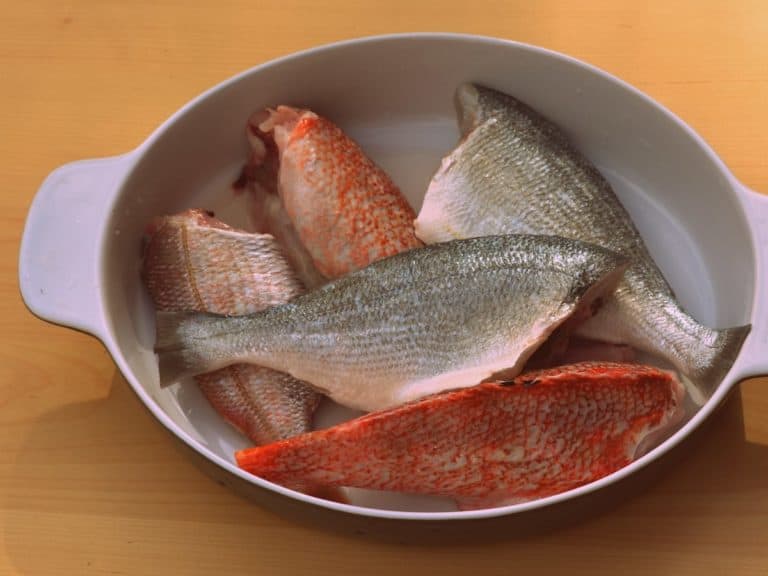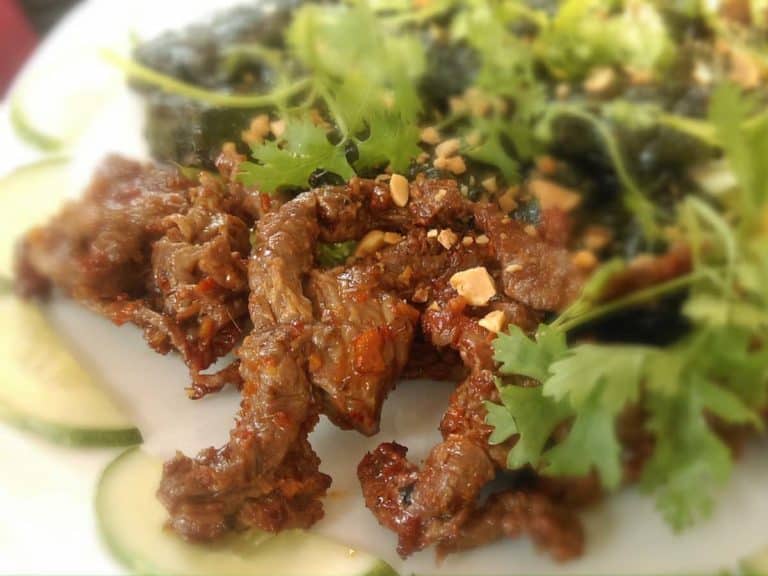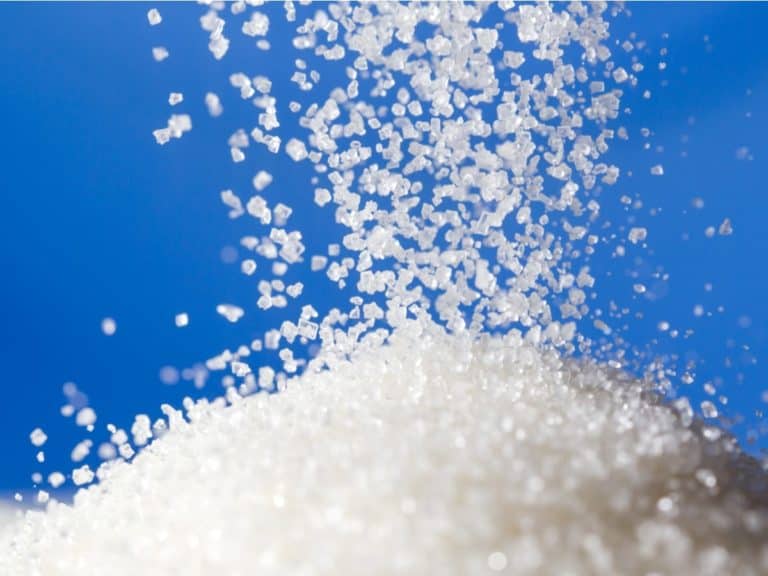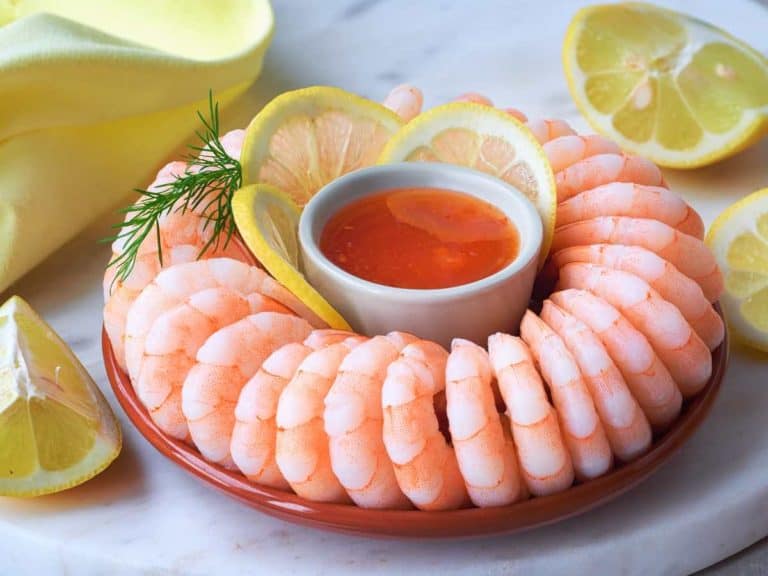Four Ways to Cook a Perfect Turkey: Roasting, Foil Test, Foil Wrapped, and Barbeque Methods
Whether you’re one of those who do not have the Thanksgiving turkey recipe you got from your mom or grandma, you’re in the right place at the right time.
This post will guide you on how to be the quintessential Thanksgiving host — you will come across foolproof tips and tricks on how to go about serving the perfect roasted turkey.
It’s still very simple and easy to follow, but we think it addresses more of the complexities of why turkeys come out properly cooked, overcooked and unfortunately at times, undercooked (itself a health hazard).
Read Also: Bake or Cook Two Things At The Same Time in Oven
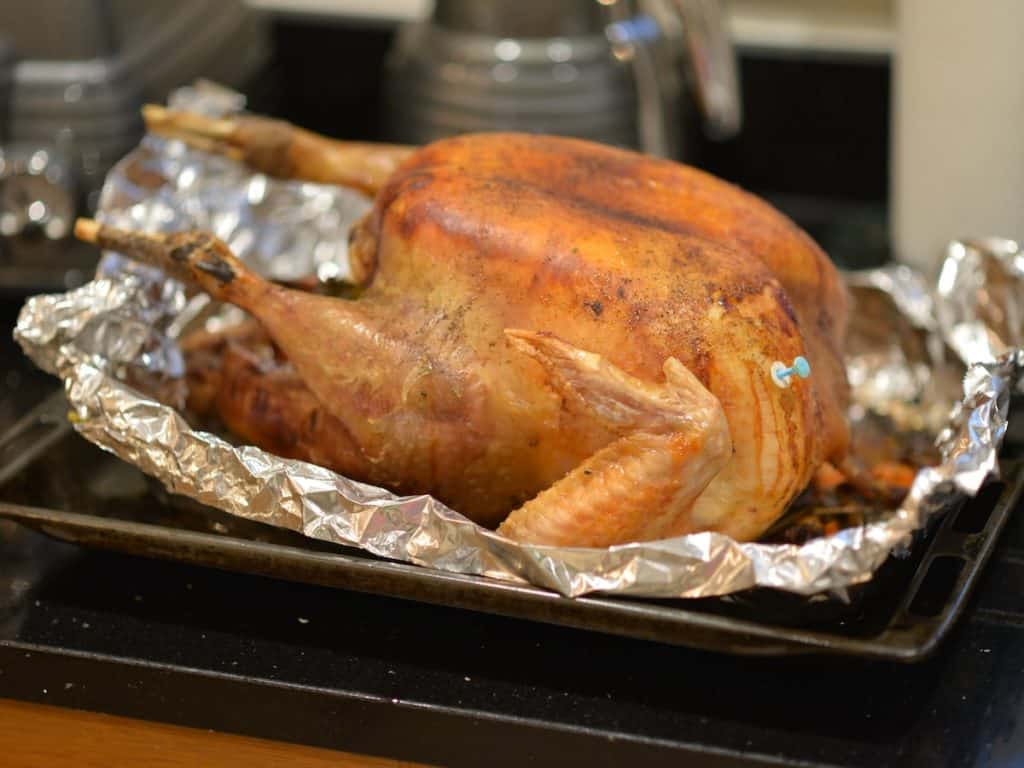
Preface: Safety Tips Before Cooking
- Wash the Bird.
Rinse all poultry and poultry pieces under cool running water, rubbing all surfaces inside and out, to wash away bacteria. - Avoid Cross-Contamination.
Any surface that comes in contact with raw poultry—knives, cutting boards, countertops, dish towels, sink, etc.—must be washed with hot soapy water before using again. Bacteria transfer easily from one surface to the next and can result in illness. - Keep hot foods hot and cold foods cold.
Both cooked and uncooked food should be stored properly and never left at room temperature for extended periods. Bacteria multiply between 40 and 140 degrees F., with the quickest growth happening between 70 and 100 degrees (right around room temperature)
Preparing the Turkey for Roasting
- Follow the safe-handling tips
Rinse the turkey in cool water, and avoid cross-contamination by washing all surfaces that come in contact with raw turkey in hot soapy water before using any other foods.
Turkey Tip: Remove the whole turkey from the refrigerator about an hour before cooking (no more than that) to bring the bird to room temperature. Make use of this time to cook the giblets or neck for the stuffing, stock, or gravy.
Pre-Roasting Steps
- Step 1: Preheat the oven to 325 degrees F., or as specified by your recipe. Move the oven rack to the lowest rung.
- Step 2: Remove the Giblets
Just before cooking, remove the giblets from their bag (stuck in the neck cavity) and the neckbone from the body cavity and rinse the giblet pieces (heart, gizzard, liver) and neckbone under cool running water to remove bacteria. Pat dry with paper towels and set aside for use in the stuffing or stock. (Note: If you are not quite ready to cook the bird within an hour after removing it from the refrigerator, return the turkey to the refrigerator until an hour before ready to roast.) - Step 3: Rinse & Season
Rinse the whole bird, including the body and neck cavities under cool running water, rubbing your hands over the surface to help remove any bacteria. Pull out any lumps of fat from the cavity and discard. Pat the bird dry with paper towels. Salt and pepper the inside and outside of the bird, and rub in any seasonings per your recipe. - Step 4: Stuffing & Trussing
As discussed below, many chefs today prefer not to stuff or truss the bird. However, if you prefer to stuff and/or truss the bird, now is the time to do it. Follow the instructions for Stuffing the Bird, or if not stuffing, proceed onto Roasting Turkey.
Before placing the turkey in the pan, lay one strip across below the legs and one below the wings. Place the turkey on top, let the ends rest over the sides of the pan. Bring the lengths up over the top of the bird as handles and use them to lift the bird out of the pan.
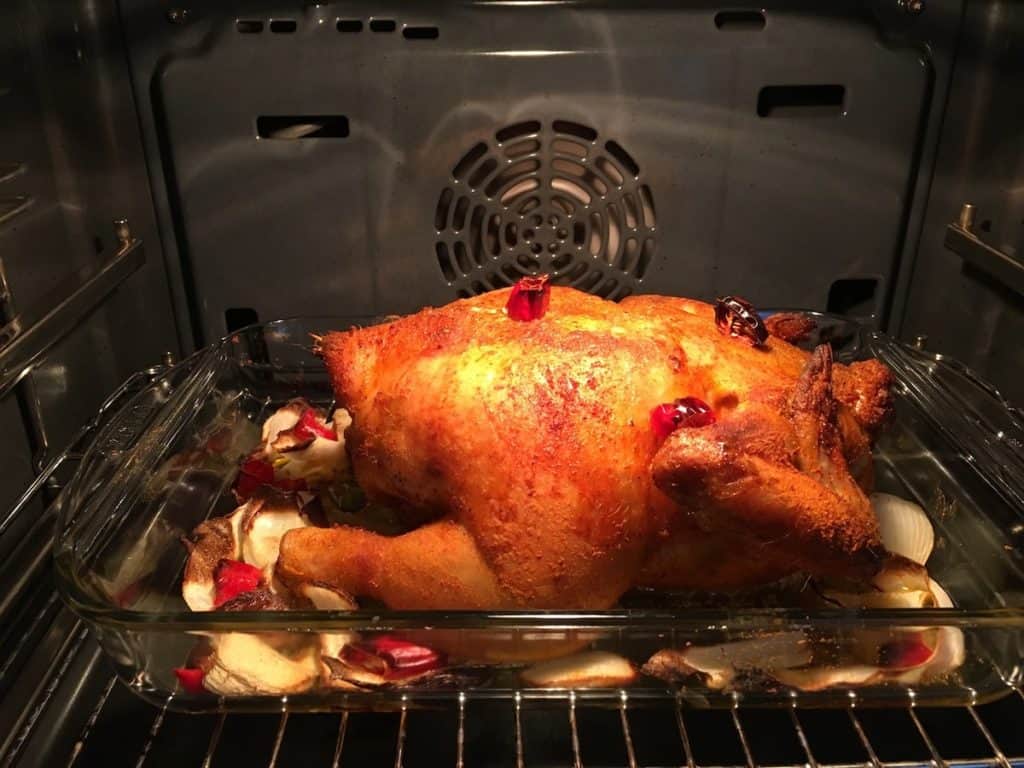
Roasting a Turkey
Earlier cookbooks recommended longer cooking times, but with today’s turkeys bred with more white meat, such times will result in dry, overcooked birds. Follow our tips for roasting and checking the temperature to achieve a perfectly cooked bird.
- Step 1: Place the bird breast-side up on an oiled flat or v-shaped rack in a 12×17 inch roasting pan, or as recommended by your recipe.Turkey Tip: Beware of aluminum roasting pans! Most of these pans are not sturdy enough to carry a 12-pound or more turkey. They can buckle and cave in, and have been known to cause injuries by collapsing under the weight. Make sure your pan is sturdy enough to handle the bird safely.
- Step 2: If using an oven-safe meat thermometer, insert it in the inner thigh near the breast, but without touching the bone. If using an instant-read thermometer, wait until the turkey is nearly cooked before testing. Don’t rely on plastic pop-up timers—they aren’t very accurate.
- Step 3: Coat the skin with softened or melted butter or oil and baste the bird every 30 minutes, or according to the recipe. Or follow our suggestions below for keeping the breast meat moist.
How do I keep the breast meat moist when cooking?
The best way is to cook the turkey at a low temperature like 325 degrees F. And to remove it from the oven when just done. While some people feel basting is unnecessary since it doesn’t permeate the skin, others recommend basting and these techniques for keeping the bird moist:
- Method #1
Soak a double layer of cheesecloth in melted butter or canola oil. Drape the cloth over the turkey while it roasts. The skin will be a rich, golden brown; if you refer a crispy skin, remove the cheesecloth 30 minutes before taking the bird from the oven. - Method #2
Baste the bird with melted butter and/or pan juices every 30-40 minutes while cooking. Or use a nonstick spray. (NOTE: Allow extra cooking time whenever you open and close the oven.) - Method #3
Loosen the skin of the bird and press the stuffing between the skin and the meat; the surface will look lumpy, but the breast meat will be remarkably moist. - Method #4
Brine the turkey overnight, refrigerated, in 2 cups kosher salt dissolved in 2 gallons water. The meat stays moister but it also takes less time to cook, so check the internal temperature earlier than usual.
Turkey Tip: To prevent the skin from overbrowning, shield the breast with a tented piece of foil, then remove it the last 45-60 minutes of cooking to allow the skin to brown.
- Step 4: Set your timer—you’ll want to start checking your bird abut 3/4’s of the way into its estimated cooking time, based on the recipe or our cooking chart. When the timer goes off, check the bird using the thermometer. If the bird is done, remove it from the oven and set it sit 20-30 minutes before carving so the flesh reabsorbs the meat juices.
Turkey Tip: While the turkey is resting before carving, take this time to make the gravy. By the time the gravy is done, the turkey should be just about ready to serve.
- Step 5: Remove all of the stuffing from the cavities, if you have stuffed the bird. For health reasons, never store stuffing in the bird.
- Step 6: Carve the bird and give thanks—it’s time to serve your Thanksgiving meal!
Cooking Turkey with Foil Tent Method
The traditional method of roasting turkey uses a foil tent of heavy duty aluminum foil to keep the turkey moist. Slow oven roasting ensures a roasted flavor.
- Appearance—even golden brown and crisp exterior.
- Advantage—often preferred for carving at the table.
How To:
Preheat the oven to 325 degrees F. Line a roasting pan, at least 2 inches deep, with heavy-duty aluminum foil.
Remove neck and giblets from both cavities of defrosted turkey. Rinse turkey, pat dry and brush with vegetable oil.
Insert a meat thermometer into the inner thigh for the whole turkey or into the thickest part of the breast for the turkey breast. Place turkey, breast side up, in a foil-lined roasting pan.
Make a foil tent by tearing off a sheet of heavy-duty aluminum foil. Crease foil crosswise through the center. Place over turkey, leaving 1 inch between the top of turkey and foil tent for heat circulation. Crimp foil onto long sides of pan to hold in place.
Roast until a meat thermometer reads 180 degrees to 185 degrees F for a whole turkey or 170 degrees to 175 degrees F for turkey breast. For stuffed turkey, add 30 minutes to the roasting time.
To brown turkey, remove the foil tent after the first 1 hour of roasting time. The approximate roasting times are 2-1/2 to 3 hours for 8 to 12 lb. turkey; 3 to 3-1/2 hours for 12 to 16 lb. turkey; 3-1/2 to 4 hours for 16 to 20 lb. turkey; 4 to 5 hours for 20 to 24 lb. turkey.
For easy slicing, cover the turkey with foil and let stand 15 minutes after removing it from oven.
Preparing Turkey in Microwave
This method is recommended only for small whole turkeys and turkey breasts. An oven bag is used to promote even cooking.
- Appearance—lightly browned with the use of a browning and seasoning sauce. Skin is not “crisp” but resembles microwave-cooked chicken.
- Advantage—the fastest method for cooking turkeys weighing 8 to 12 pounds.
How To:
Shake 1 tablespoon of flour in an oven bag. Use a large-size bag (14″ x 20″) for 8 to 12-pound turkey and 4 to 7-pound turkey breast. Leave flour in the bag. Place bag in 2-inch-deep microwave-safe baking dish.
Remove neck and giblets from both cavities of defrosted turkey. Rinse turkey, pat dry and brush with a combination of 1 tablespoon vegetable oil and 1/4 teaspoon browning and seasoning sauce. Sprinkle with salt, pepper, and paprika for additional color, if desired.
Do not stuff the turkey.
Slice 1 onion and 2 stalks of celery; place in oven bag. Place turkey, breast side up, in oven bag on top of vegetables. Close oven bag with nylon tie; cut six 1/2-inch slits on top of oven bag.
Microwave on MEDIUM (50% power) for 7 to 9 minutes per pound rotating dish every 15 minutes. Not recommended for turkey over 12 pounds
Use an instant-read thermometer after cooking. Turkey is done when the thermometer reads 180 degrees to 185 degrees F for whole turkey or 170 degrees to 175 degrees F for turkey breast.
Insert a thermometer through a slit in the oven bag into the inner thigh for the whole turkey or into the thickest part of the breast for the turkey breast.
For easy slicing, let stand 10 minutes after removing from the microwave oven. To open, carefully cut or slit the top of the oven bag. NOTE Microwave directions were tested in 600 to 700-watt microwaves. Higher or lower wattage ovens may need adjustment in cooking times.
Cooking Turkey with Barbecue Method
This method requires a covered barbecue grill and heavy-duty aluminum foil.
- Appearance—even golden brown and “crisp” exterior. The meat just under the skin may have a pink color, typical of charcoal-cooked turkey.
- Advantage—a very easy method for cooking turkey outdoors.
How To:
Line a charcoal grill with heavy-duty aluminum foil to keep after-the-meal cleanup to a minimum. (Do not line a gas grill.) Open all vents and punch holes through foil at grill vent openings, allowing for air circulation.
Arrange charcoal in a pyramid shape at bottom of the grill, and ignite. When coals are hot, carefully place a large barbecue drip pan in the center of the grill. Arrange coals on either side.
(To make foil drip pan: Stack 2 sheets of heavy-duty aluminum foil 6 inches longer and wider than food to be cooked. Fold in all edges 1-1/2 inches. Fold edges upright, forming 1-1/2-inch sides. Press corners against sides.)
Remove neck and giblets from both cavities of defrosted turkey. Rinse turkey, pat dry and brush with vegetable oil.
Do not stuff the turkey.
Insert meat thermometer into the inner thigh for the whole turkey or into the thickest part of the breast for the turkey breast. Grease grill rack with vegetable oil. Place turkey, breast side up, on grill rack above drip pan.
Cook in covered grill over medium, indirect heat until a meat thermometer reads 180 degrees to 185 degrees F for whole turkey or 170 degrees to 175 degrees F for turkey breast.
For a charcoal grill, add additional charcoal every 45 to 50 minutes to maintain medium heat. The approximate roasting times are 2 to 3 hours for 8 to 12 lb. turkey; 3 to 4 hours for 12 to 16 lb. turkey. Not recommended for 16 to 24-pound turkey.
For easy slicing, cover turkey with foil and let stand 15 minutes after removing from grill.
Cooking Turkey with Foil Wrapped Method
A real timesaver, this method of cooking turkey requires a high oven temperature of 450 degrees F and heavy-duty aluminum foil.
- Appearance—light golden brown with some variation in color. Skin is not as “crisp” as traditional foil tent roasted turkey.
- Advantage—often preferred for faster roasting time.
How To:
Preheat oven to 450 degrees F. Remove neck and giblets from both cavities of defrosted turkey. Rinse turkey, pat dry and brush with vegetable oil.
Tear off a sheet of 18-inch-wide heavy-duty aluminum foil 2-1/2 times longer than the turkey. Place turkey, breast side up, in center of a foil sheet.
Bring long sides of the foil over turkey; close loosely by overlapping the ends. Turn up short sides of foil to hold in juices. Do not seal airtight. Place foil-wrapped turkey in roasting pan at least 2 inches deep. Insert meat thermometer into the inner thigh for the whole turkey or into the thickest part of the breast for the turkey breast.
Roast until a meat thermometer reads 180 degrees to 185 degrees F for whole turkey or 170 degrees to 175 degrees F for turkey breast.
For stuffed turkey, add 30 minutes to roasting time. To brown turkey, open and turn back foil 30 minutes before roasting is finished.
The approximate roasting times are 1-1/2 to 2-1/4 hours for 8 to 12 lb. turkey; 2-1/4 to 2-3/4 hours for 12 to 16 lb. turkey; 2-3/4 to 3-1/4 hours for 16 to 20 lb. turkey; 3-1/4 to 3-3/4 hours for 20 to 24 lb. turkey.
For easy slicing, cover turkey with foil and let stand 15 minutes after removing from oven.
Making the Gravy
- Make the gravy in the same pan you used to roast the turkey.
- All gravies require a thickener and one or more liquids.
Thickeners: flour or cornstarch
Liquids: the pan juices, chicken broth, water, or stock and sometimes a dash of white wine, milk, sherry, etc. - Determine your measurements.
The standard ratio is 1 tablespoon of fat from the drippings, plus 1 tablespoon of flour (or 1/2 tablespoon of cornstarch), per cup of liquid. - Cook the flour all the way through.
Undercooked flour gives off a raw taste. It should bubble in the fat and start to turn brown.
Making the Basic Gravy
- Step 1:
Remove the turkey and rack from the pan. Pour off the liquids from the pan into a Pyrex or heatproof measuring cup. Let settle until the fat rises to the top, then skim off as much as possible, reserving the desired amount for the gravy. - Step 2:
Heat the roasting pan over a burner (or 2 if it’s really large). Stir in the flour over medium heat cook through until it bubbles and browns slightly. Remove the pan from the heat and stir in the reserved juices and broth or other liquids. Reheat the pan over the burner(s) and let the mixture come to a slow boil; season with salt and pepper and boil for 1 minute until the gravy thickens. - Step 3:
If the gravy cools before serving it may become too thick and should be reheated with additional liquid.
Turkey Tip: Additions to gravy may include cooked, chopped giblets, finely diced tomato bits, mushrooms, and parsley.
Carving Turkey
- Make sure your carving knife is sharp.
Sharpen with a steel or electric sharpener, whetstone, or another sharpening gadget. You are more likely to cut yourself using a dull knife than a sharp one.
Turkey Tip: Use a long-two pronged carving fork to hold the bird steady as you cut.
Basic Carving steps
- Step 1: Removing the thigh, drumstick & wings
- hold the drumstick and pull it away from the body;
- slice through the skin to the joint where the leg meets the backbone
- cut through the joint, pressing the leg away from the body with the side of the knife
- when the leg is freed, cut through the drumstick-thigh joint
- if desired, cut these pieces into slices, running the knife parallel to the bone.
- to cut the wings off, follow the same type of procedures, always cutting through the joint
- Step 2: Carving the breast
- make a long slit across the base of the breast, parallel to the wing, all the way to the rib cage
- cut thin slices vertically across the beast; if done properly, the horizontal cut you made at the base will allow these slices to fall off gently as you progress through the breast.
Storing Leftovers & Food Safety After Cooking
Never let the Thanksgiving meal linger.
Refrigerate the cooked turkey and other parts of the meal within 2 hours after cooking. Never store the stuffing and the turkey together.
Turkey Tip: Before serving the turkey, set out all your storage containers, foil, zipper bags, etc., so they are ready for filling with leftovers as soon as the meal is over. You’ll not only store the foods more safely by minimizing their exposure out of the refrigerator, but you can more easily enlist extra pairs of hands to help out in the kitchen.
Use refrigerated turkey and stuffing within 3 days of cooking.
Reheat leftover stuffing to at least 165 degrees F. Bring leftover gravy to a rolling boil before serving. Cool foods rapidly by storing in shallow, small containers.
Turkey Tip: To keep the cut surface of the turkey breast from drying out, press a piece of plastic wrap or a damp paper towel next to it before covering and refrigerating.
Read Next: The Perfect Turkey Handbook
